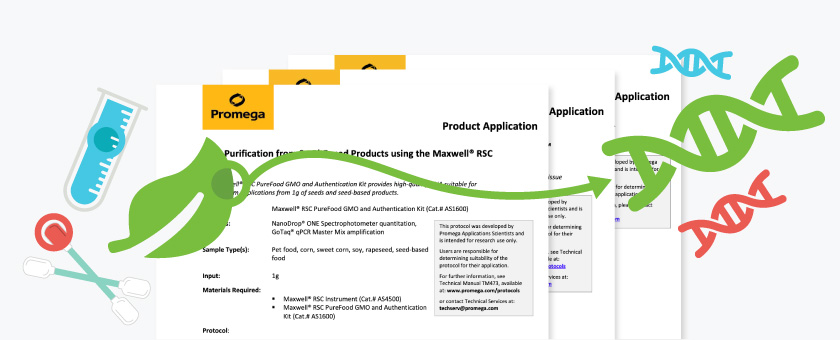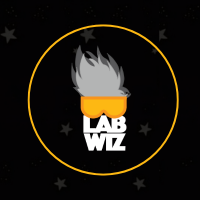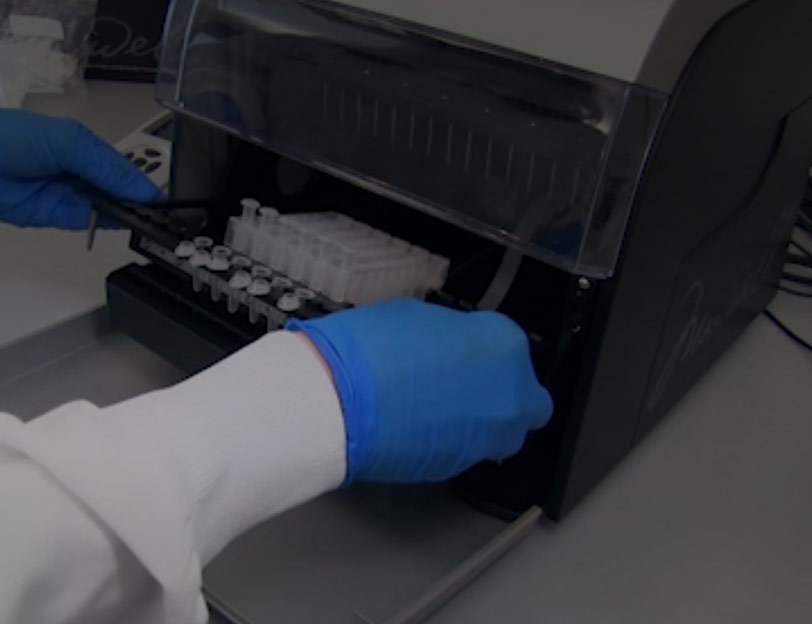DNA Extraction
Promega genomic DNA extraction products are designed for isolation of high-quality DNA from many sample types, including blood, cells, tissues, plants, microbes and more. DNA extraction kits are available for all sample throughput needs–from simple manual systems through benchtop automation to customizable chemistries for DNA isolation on robotic liquid handlers.
Manual genomic DNA extraction kits (Wizard®, ReliaPrep™ and MagaZorb™ Systems) are designed to process small numbers of samples and provide a choice of DNA purification methods including solution based, silica membrane-based, resin-based and magnetic options.
Maxwell® RSC and Maxwell® 48 instruments and kits provide benchtop-scale automated purification from 1-48 samples based on convenient cartridges for specific sample types.
Maxwell® HT systems are designed for high-throughput automated nucleic acid extraction and can be customized to your laboratory’s needs.
We offer DNA extraction products for all your throughput needs.
Explore Nucleic Acid Extraction Protocols by Sample Type
The Technical Manual supplied with each kit contains recommended protocols for specific sample types. We continue to test additional sample types and publish the results as short Application Notes. Search our Application Notes database for your specific sample type of interest to find protocols for manual, Maxwell or plate-based methods.

Filter By
Shop all DNA Extraction
Showing 44 of 44 Products
Genomic DNA Extraction Basics
Obtaining good yields of high-quality DNA is a fundamental step critical to the success of many molecular biology applications.
Genomic DNA extraction methods isolate genomic DNA away from proteins, RNA and other cellular material. The basic steps involved in DNA isolation are: 1) Disruption of the cell structure to create a lysate; 2) Protection of DNA from degradation during processing; 3) Separation of the soluble DNA from cell debris and other insoluble material; and 4) Elution of purified DNA.
Solution-based methods for DNA purification rely on precipitation and centrifugation steps to separate the genomic DNA in the cell lysate from other cellular materials. These methods use either organic extraction or “salting out” to separate soluble DNA from cellular proteins. Finally, the DNA is isolated by ethanol precipitation.
Solid-phase extraction methods involve binding of DNA to a solid support, such as silica or cellulose matrices, followed by washing and elution of the DNA from the solid support. Such methods can involve centrifugation, vacuum or magnetic methods to separate the bound DNA from other cellular components.
The best DNA extraction method to choose for any given situation will vary depending on your sample type, the number of samples you need to process, and the downstream application you are performing.




